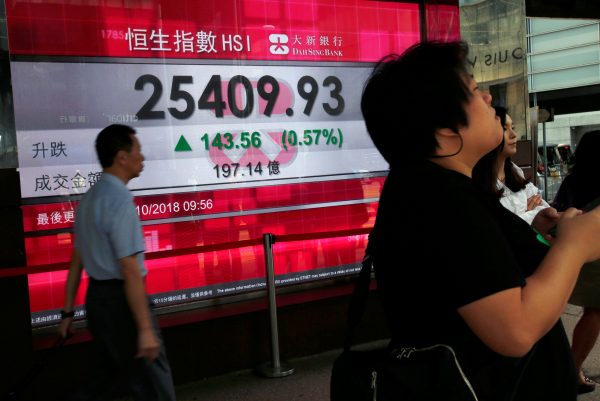The direct impact of the trade war on Hong Kong is small. US–China entrepot trade via Hong Kong in 2017 was just 9 per cent of Hong Kong’s total export and import trade. The majority of the items included in the trade war also do not pass via Hong Kong. But Hong Kong is feeling the conflict’s indirect effects, with a deteriorating business environment discouraging investment and disrupting business planning and development.
More importantly, any slowdown of the Chinese economy would reduce demand for Hong Kong’s banking and finance, professional and logistics services. If the trade war escalates, Chinese demand for raw materials and semi-manufactured goods will also fall, affecting Hong Kong’s re-exports to China from countries other than the United States.
The world economy will grow at a lower rate than expected in 2019. In addition to the US–China trade war, issues related to Brexit, currency crises in some emerging economies and a change in monetary policy in the United States are impacting global growth figures. The International Monetary Fund’s most recent forecast for global economic growth is 3.5 per cent, lower than the 3.7 per cent predicted earlier this year.
Some economists are also warning of a possible financial crisis or at least increased financial risks as a decade of quantitative easing comes to an end. Interest rates are on the rise, and emerging economies are experiencing the consequential capital outflows.
Some doubt whether the world is more prepared to cushion financial risks than in 1997–98 or 2007–08. Even under the linked exchange rate, the Hong Kong government was forced to intervene to defend its dollar in 2018. Though Hong Kong’s robust monetary system and prudent supervision should be able to keep the country out of financial crisis, the hiking of interest rates and a deteriorating business environment have triggered adjustments in the stock and property markets. Irrespective of whether such adjustments should be made for market corrections, domestic consumption will likely decrease due to the adverse wealth effect.
The silver lining for Hong Kong is favourable geo-economics in the region. The Hong Kong–ASEAN free trade agreement that was concluded in November 2017 is proving particularly significant. Despite the fact that the agreement will not be enforced until early 2019, Hong Kong–ASEAN economic interactions are already on the rise. In the first three quarters of 2018, Hong Kong’s domestic exports to ASEAN (its second largest trading partner after mainland China) increased by 7.3 per cent and imports by 20.1 per cent year-on-year. Hong Kong also serves as ASEAN’s stepping stone to China, with 599 ASEAN companies established in Hong Kong as of June 2018.
Another favourable development is the formation of the Greater Bay Area, which includes nine Guangdong cities plus Hong Kong and Macau. The Bay Bridge linking Zhuhai, Macau and Hong Kong was opened in October 2018, bringing Hong Kong more Chinese tourists and businesses. In the long run, the bridge will play a key role in facilitating the development of the Greater Bay Area.
The Greater Bay Area reflects a push towards a common market with free flows of human and capital resources, goods and services and information. The major opportunity for Hong Kong is synergy with Guangdong cities such as Shenzhen, Zhuhai and Guangzhou in innovation and technology. Hong Kong may also see an opportunity to establish bridgeheads in Guangdong cities in health care and educational services.
Domestic investment and consumption remained strong in Hong Kong in 2018, a trend that is expected to continue into 2019. The government has significantly increased expenditure on education and is committed to investing an additional HK$20 billion (US$2.6 billion) in research and development. Another HK$20 billion has been put aside for the longer term development of the Lok Ma Chau Technology Loop adjacent to Shenzhen.
Private consumption is supported by near full employment (the unemployment rate was 2.8 per cent in the third quarter of 2018). The demand for professional, business and financial services from mainland China and elsewhere has been strong, which will continue unless US–China relations further deteriorate or global financial risks increase.
Assuming that a short-term solution to the US–China trade war will be achieved following the 90-day truce, and that Federal Reserve interest rate increases will be milder than expected, Hong Kong should be able to attain 3 per cent GDP growth in 2019 — slightly higher than the past 10-year trend of 2.9 per cent. This would be still lower than the 3.8 per cent achieved in 2017 and the estimated 3.2 per cent expected for 2018. But given the current state of play, 3 per cent may be a figure to cheer about.
Edward K Y Chen is Chairman of the Board of Directors at the School of Professional and Continuing Education, The University of Hong Kong.
This article is part of an EAF special feature series on 2018 in review and the year ahead.

